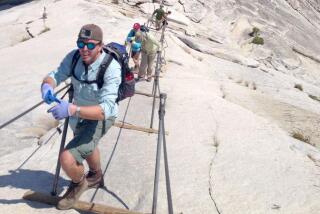Letters to the Editor: How everyone can help capture more stormwater in L.A.

- Share via
To the editor: The answer to the question of whether the Los Angeles River can be our water solution is, “Yes, and ...”
Distributed power generation (rooftop solar, in other words) made it so we didn’t have to build more costly fossil fuel-fired power plants. One household installing a solar power system doesn’t make a difference, but the campaign to get solar on as many roofs as possible has.
Ever since William Mulholland said, “There it is, take it,” when the first Los Angeles Aqueduct opened in 1913, government has been enamored of big-ticket engineering projects as the answer to water supply issues. Policies intended to reduce water use have resulted in the proliferation of impermeable plastic grass and property owners paving their entire yards. Both increase runoff and urban heat island effect.
Distributed recharge via trenches and tube wells can help fill our aquifers one property at a time, helping overloaded storm drains and reducing local street flooding. Such an effort would create community engagement around water stewardship, and maybe even save a ton of money.
Douglas Hileman, Valley Glen
..
To the editor: Not mentioned as possible recapture areas for rainwater are the largest flood control basins behind many of our very large flood control dams, including the Hansen Dam in Lake View Terrace, the Sepulveda Dam in Van Nuys, and the San Gabriel Dam in the Angeles National Forest.
Some debris removal might be necessary, but the land is there.
Growing up in the San Fernando Valley, I recall when Hansen Dam had a lake year-round. During the summer there was a beach off Osborne Street in the north valley. All that water could only have come from rain during the winter.
Cary Adams, North Hollywood
..
To the editor: The “atmospheric river” last week allowed me to put my environmental studies major to work by explaining El Niño weather patterns. Global warming played a role in the storm, and fossil fuel companies have played a huge role in creating global warming.
We should also consider the role of trees as nature’s vacuum cleaners. Newly planted trees won’t absorb the rain if another freak storm occurs, but climate-smart forestry can help mitigate climate change.
As Congress turns its attention to the Farm Bill, it should consider the health of forests and other related issues. The $20 billion allocated for healthy forests should stay in the Farm Bill to help create a healthier environment — and in L.A., a safer one too.
Sara Eyassu, Los Angeles




